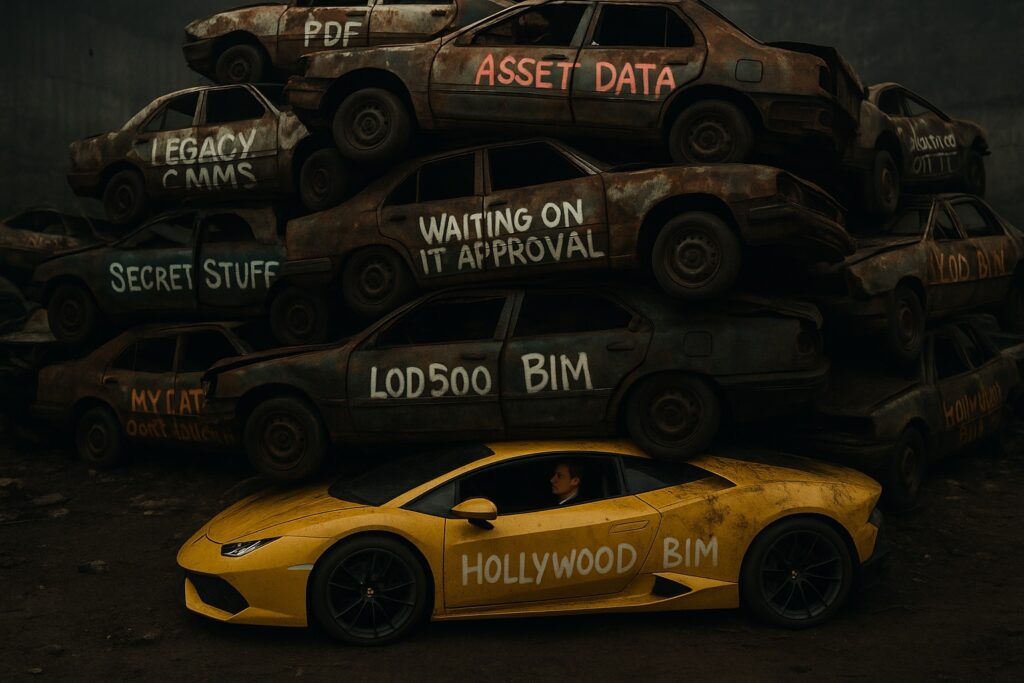Time to take out the trash.
If you can’t see it, you can’t secure it.
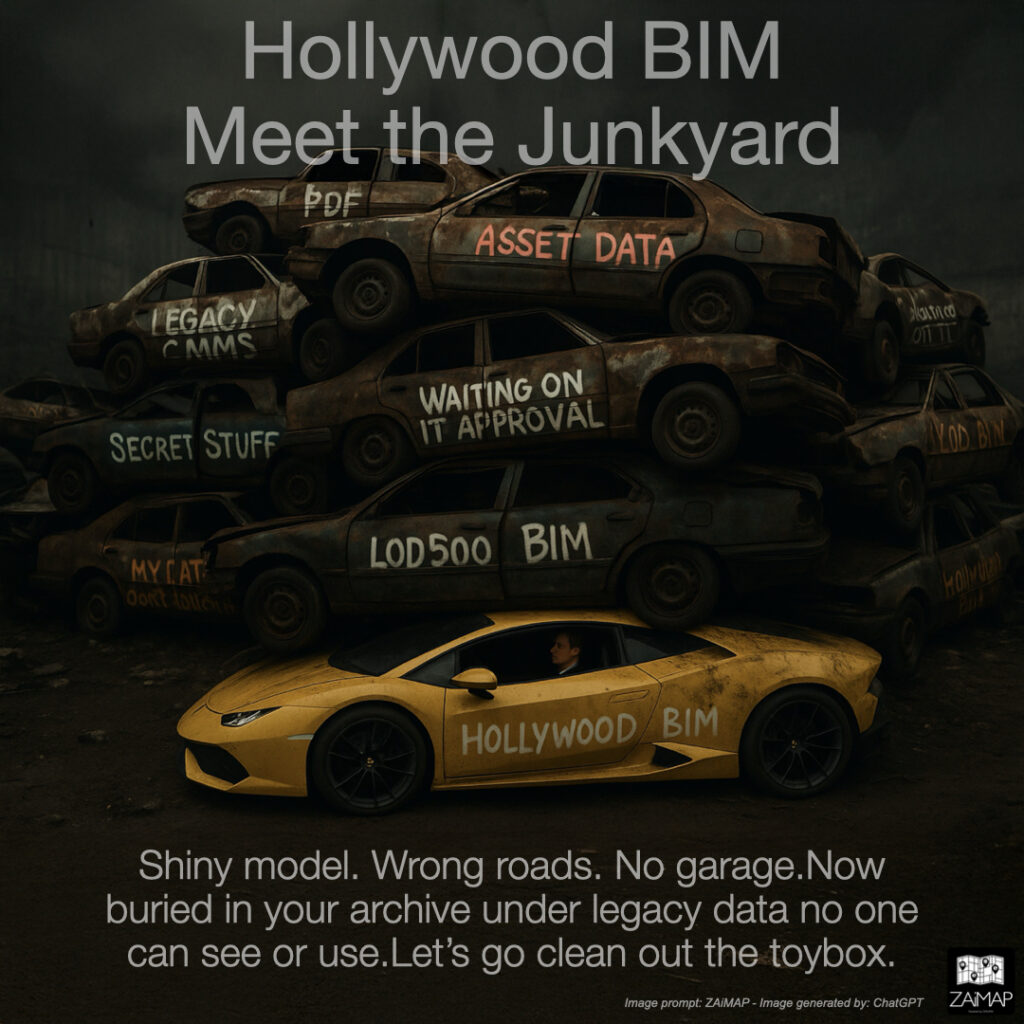
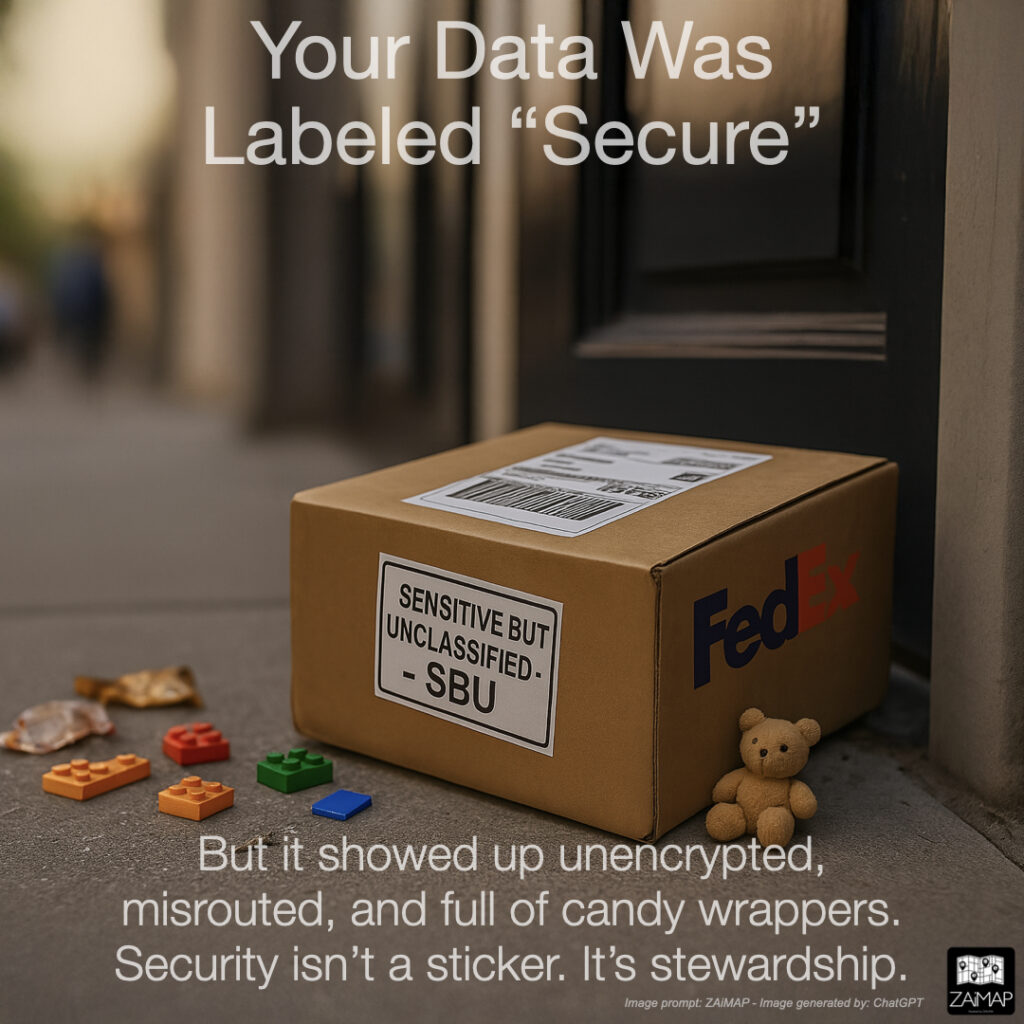
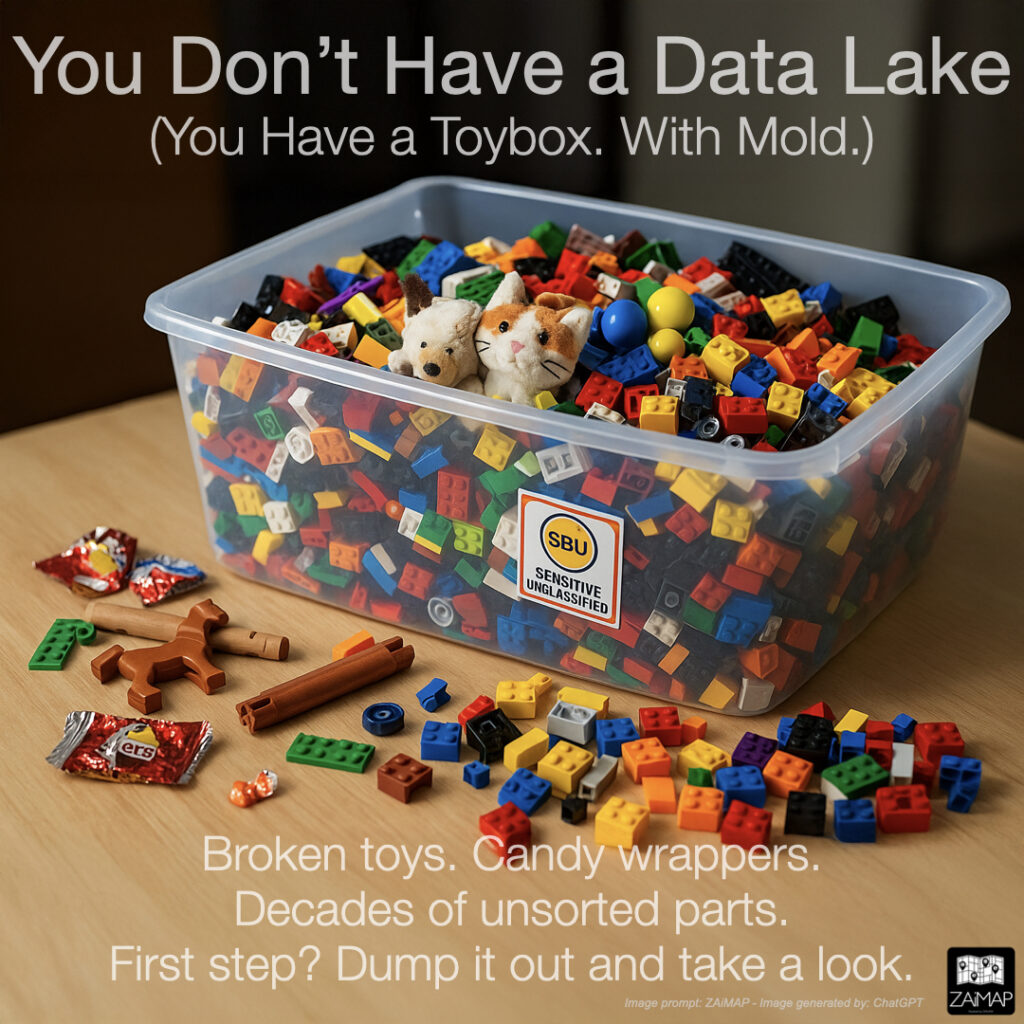
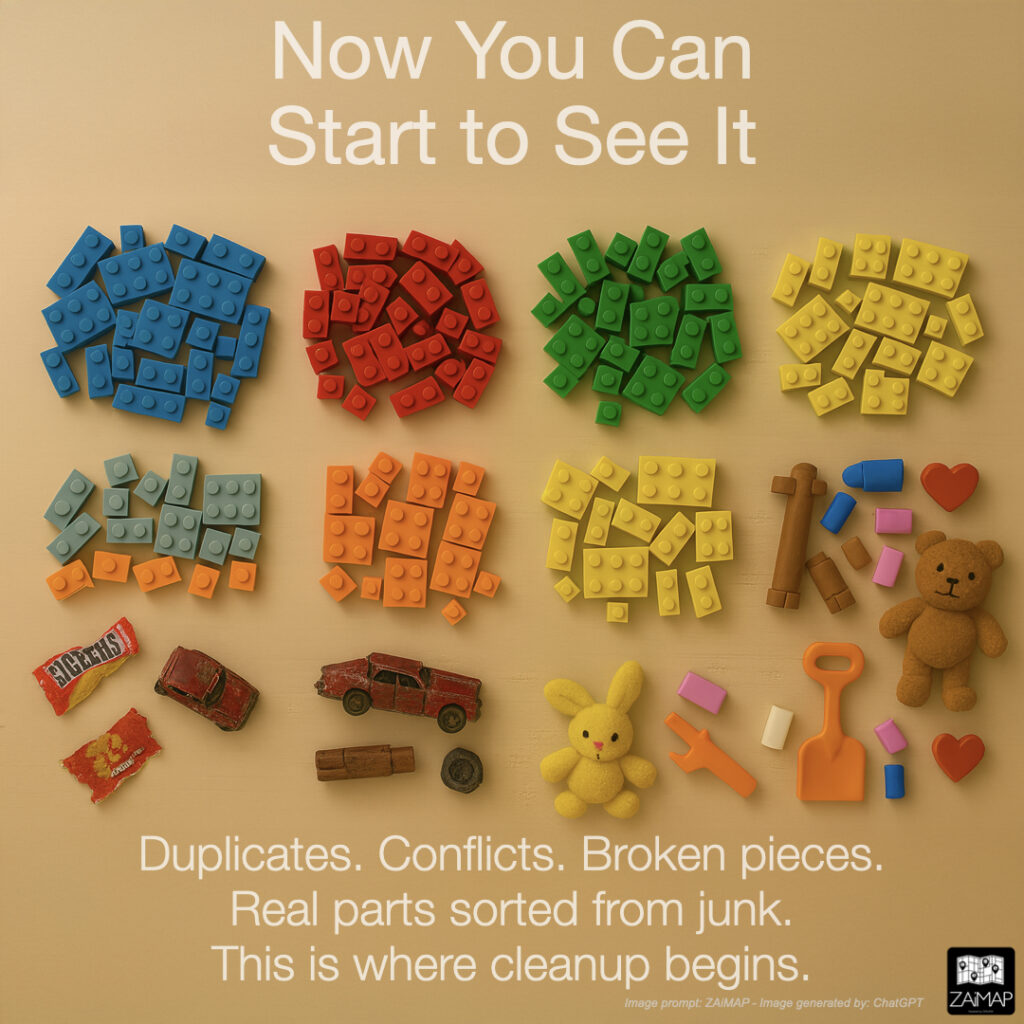
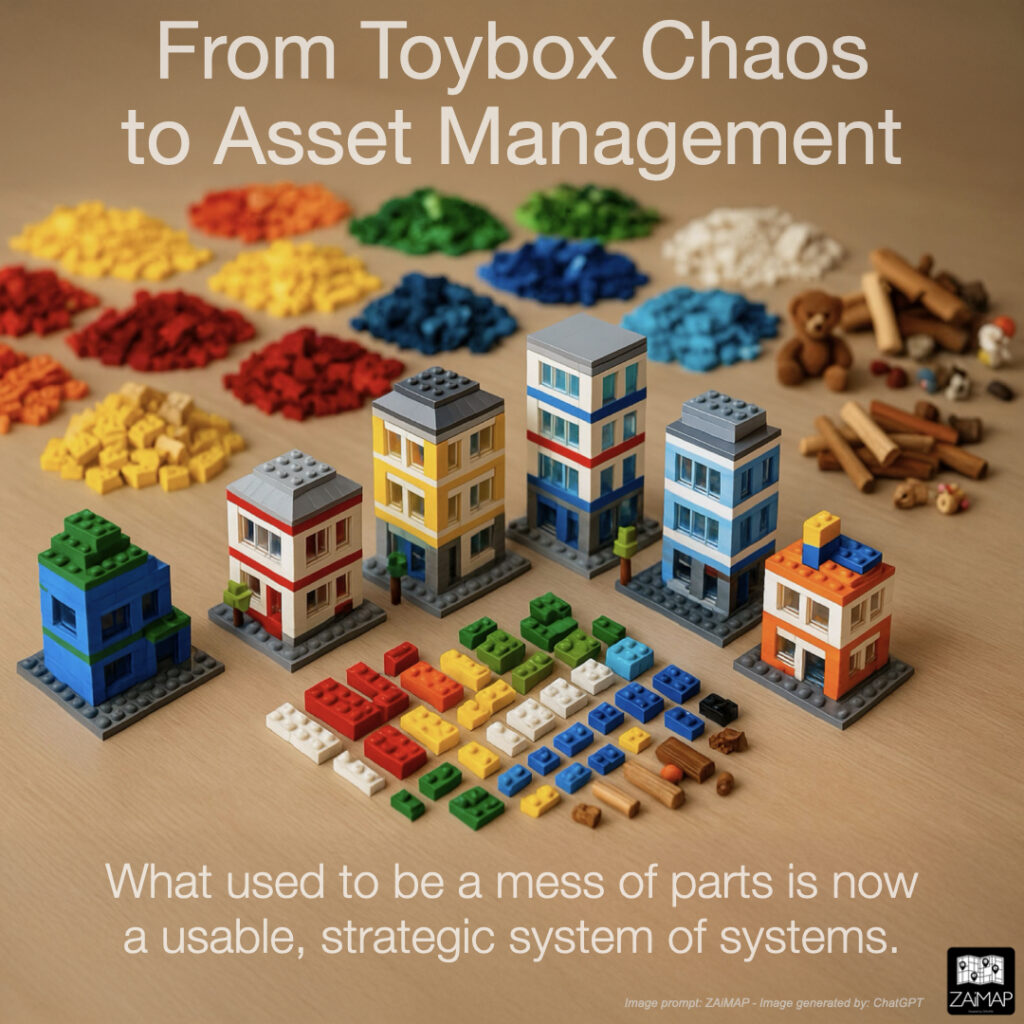
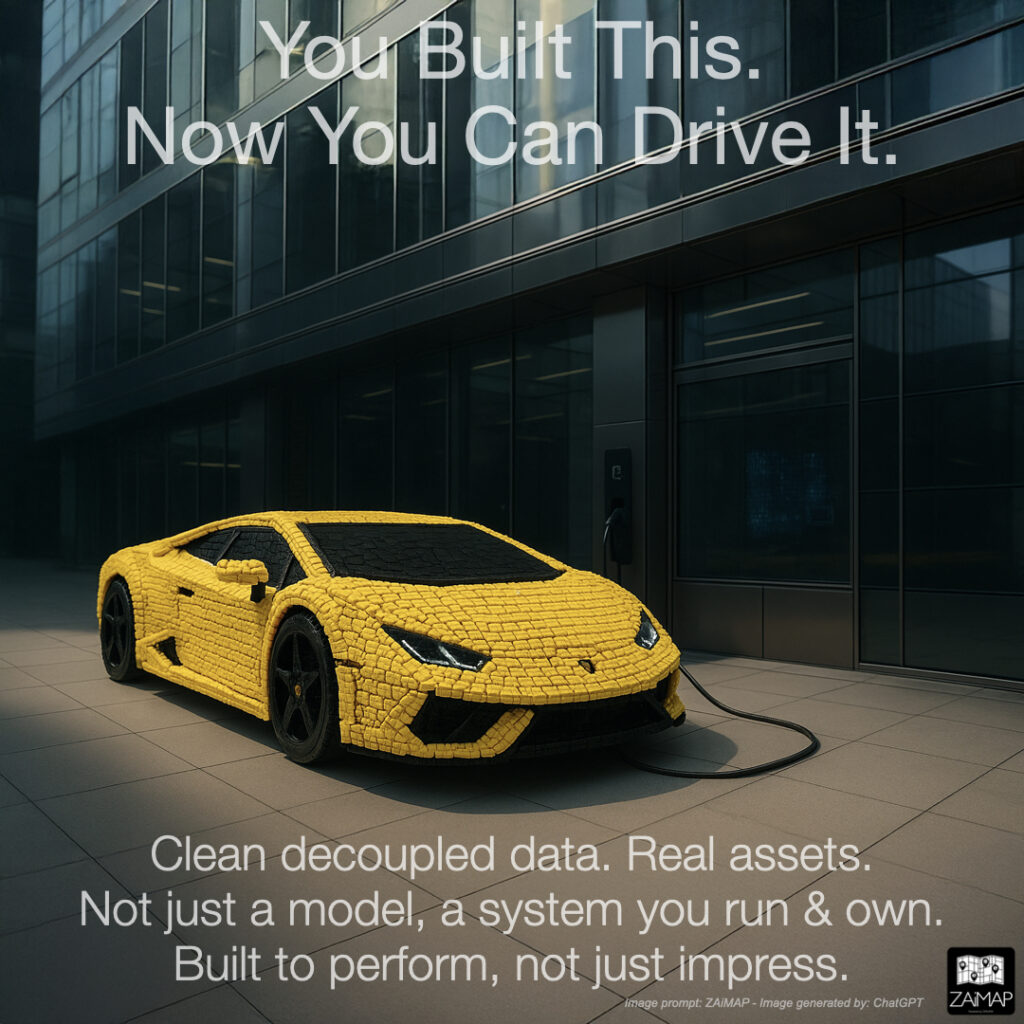
Trapped Data Mixed in with Garbage
I’ve spent decades working with federal agencies, universities, hospitals, utilities, and private campuses. And over and over, I’ve seen the same slow-motion pileup: critical building and asset data buried beneath layers of digital debris, outdated files, duplicate spreadsheets, broken portals, and systems that can’t (or won’t) talk to each other.
Picture a Lamborghini crushed under a rusting heap of scrap metal. The value is there, it’s just completely obscured.
Meanwhile, teams scramble to answer basic questions like:
- How many buildings do we actually own?
- Which systems are connected to which assets?
- Who has access to what?
- Where’s the source of truth?
The answers, when they come, arrive as last-minute spreadsheets, stitched-together PDFs, and long email chains.
In many agencies, the annual facility inventory is rebuilt from scratch through internal “data calls”, a scramble to export fragments from legacy systems and reassemble them in Excel.
And this isn’t some obscure corner of government.
The U.S. federal government, the largest asset owner in the world, still relies on this process to populate the Federal Real Property Profile (FRPP). A national inventory, fed by disconnected spreadsheets, recompiled every year, and still full of holes.
The result is always the same: a Frankenstein dataset with missing limbs and stitched-together logic.
AI can’t help you if your knowledge is still in a lost FedEx package. Image prompt: Onuma – Image generated by: ChatGPT
I’ve seen it all:
- Sensitive facility data burned to CDs, shipped via FedEx, and delivered to the wrong office, unencrypted.
- Internal teams are unable to access their own data due to overclassification and bureaucracy.
- Building automation systems patched together with proprietary software and routers that no one understands or maintains.
- BIM deliverables span decades and billions of dollars in projects, yet none of the data ever makes it into operations.
- BIM Execution Plans say one thing, but what’s delivered is unchecked and unusable.
- Consultants and vendors who thrive on chaos, stitching the mess together just enough to get by, and repeating it year after year.
This isn’t governance. It’s failure, carefully formatted—and it’s everywhere. Higher ed, healthcare, and commercial real estate, each carrying the same broken habits forward.
- Facility managers who don’t know what data they have.
- IT teams that won’t share data for fear of exposing their poor condition.
- Leadership teams who demand performance and security but don’t realize the data foundation is not stable for years and is a risk rather than an asset
Owners Are Now Asking the Right Questions
More and more, I hear the same question from owners: “How can I use AI to optimize operations, reduce risk, and improve outcomes?”
That question exposes the truth: most data isn’t AI-ready, it’s not even accessible. I’ve heard the disbelief: “You mean I can’t ask my own data a question?” It’s the moment where the illusion of “secure and available” finally shatters.
Many systems that appear modern are merely shiny wrappers around broken, siloed guts. And when owners push for AI, they’re often met with vague deflections or more tech band-aids.
Meanwhile, the risks keep stacking up:
- Wildfires, floods, and blackouts
- Cyberattacks and insider threats
- AI-driven deception
- New mandates for energy, carbon, and risk reporting
These aren’t future threats. They’re already altering contracts, operations, and expectations. If your data isn’t visible, trustworthy, or ready to act on, you’re already behind.
- You can’t secure what you can’t see.
- You can’t act on what you can’t access.
- You won’t survive what’s coming unless you fix the data problem first.
Start Simple: Three Steps to Take Now
We’ve been stuck for years in working groups and white papers. Open standards are great, but the execution has been missing. While we debate, the silos grow. Let’s stop waiting.
Think of your data like a giant plastic bin of mixed-up building toys: some valuable, some useless, some empty candy wrappers, and most unorganized. If you want to build something smart, secure, and AI-ready, you’ve got to start by dumping the whole thing out and seeing what’s really there.
Image prompt: Onuma – Image generated by: ChatGPT
Step 1: Open the Box
Don’t wait for perfection. Surface what you’ve got, even if it’s ugly. What exists? Where? Who controls it? If anything is blocking visibility, a system, a contract, or a person, remove the blocker.
This isn’t about exposing data to the public. It’s about your organization finally seeing what it owns. If you can’t access it, you don’t own it. And you definitely can’t secure it.
Image prompt: Onuma – Image generated by: ChatGPT
Step 2: Sort the Pile
Look at it side-by-side. You’ll spot:
- Redundancies
- Conflicts
- Mislabels
- Five versions of the same floor plan
Only by reviewing it all can you begin to build shared semantics and clean structure.
You can’t take out the garbage if you can’t see it. And right now, it stinks.
You’ll often hear the phrase “garbage in, garbage out” used to dismiss the problem as if bad data is inevitable and not worth addressing. But you can’t take out the garbage if you can’t see it. Currently, most of it is hidden under the digital rug, duplicated, mislabeled, outdated, and sitting alongside valuable data. The first step isn’t cleanup, it’s exposure. Surface the mess. Smell the problem. Then you can start removing it and preventing the rot.
Image prompt: Onuma – Image generated by: ChatGPT
Step 3: Build What Matters
- Clean up the duplicates
- Archive or toss the junk
- Catalog what you trust
- Decouple your data from apps, vendors, and IT bottlenecks
Now your data becomes portable, usable, and strategic. You can decide how it connects and how it supports your mission.
One agency I worked with had five systems just to count buildings. Five different lists. Once we laid them out side by side, they finally built one clean version. That wasn’t a tech win. It was a leadership decision.
If you are unsure of the assets you own, how will you recognize when they are being targeted?
The biggest confusion we see? Organizations assume their data is secure because they believe no one can access it. But that’s not security, that’s obscurity. In fact, it’s one of the greatest risks you face. And bad actors know it. Confusion, fragmentation, and locked-down systems create the perfect cover for exploitation. As AI tools continue to accelerate in sophistication, attackers are increasingly exploiting this chaos, leveraging your lack of visibility as an attack vector.
The good news? This is fixable. It starts with courage
This isn’t a tech problem. It’s a leadership one.
And it starts with you, the owner.
You don’t need to solve everything at once. You just need to start:
Lift the lid. Sort the pile. Build what matters.
Treat your data like the foundation it is, not a leftover byproduct. Make it visible, portable, and ready to serve your mission.
Take that first hard step and confront what’s buried, and turn it into something usable.
You can’t secure what you can’t see.
Start by seeing.
“All teams will henceforth expose their data and functionality through service interfaces.”
The Jeff Bezos API Mandate
Until that happens, all the talk about digital twins, cybersecurity, smart buildings, or AI readiness is just noise.
As Jack Dempsey recently pointed out in his call to action on the President’s Management Agenda, our foundational systems aren’t broken because we lack tools; they’re broken because we lack visibility and leadership.
We don’t need another roadmap.
We need to clear the wreckage and start seeing what we already have.
Once you expose, review, and organize your data, you’ll truly own it.
The garbage will stop stinking.
The value will rise.
Your organization will stop reacting and start anticipating.
Data will shift from liability to leverage, powering better decisions, secure automation, and real-world results.
That’s why we’re working with organizations like the Asset Leadership Network, the Coalition for Smarter Buildings, the Linux Foundation, and the Tiger Team, helping owners pilot simple, open, proven ways to finally see their data.
And when that happens?
You won’t just clean up the mess.
You’ll drive that shiny yellow Lamborghini, built from the lost pieces you thought were junk.
This topic will be explored further on the Café ZAi podcast, now live here. https://sites.google.com/onuma.com/onumainc/cafe-zai
I welcome your thoughts on LinkedIn here!
Image prompt: Onuma – Image generated by: SORA

